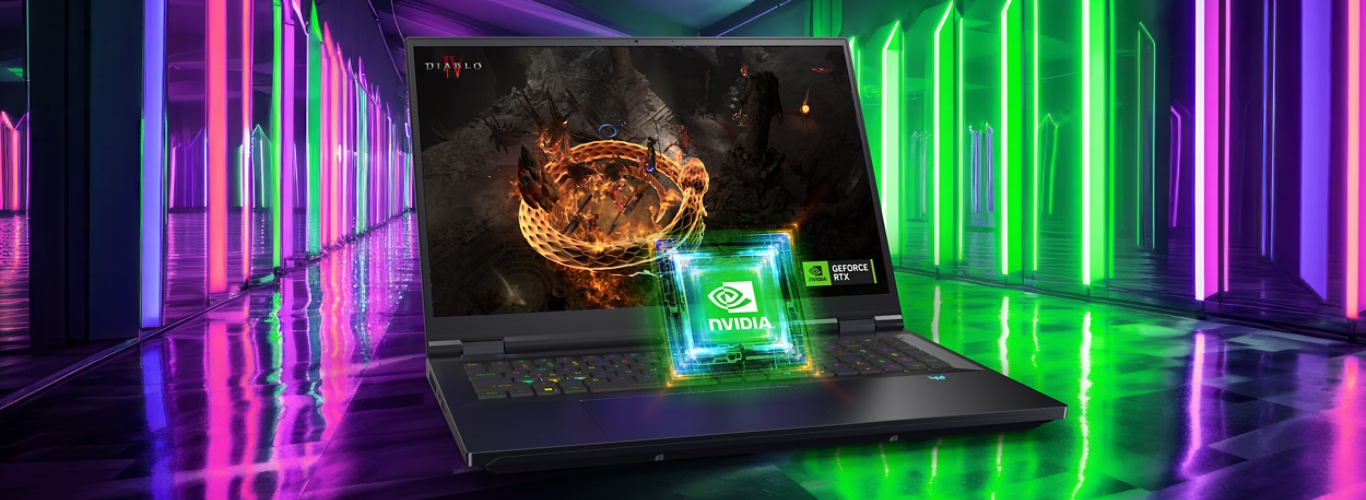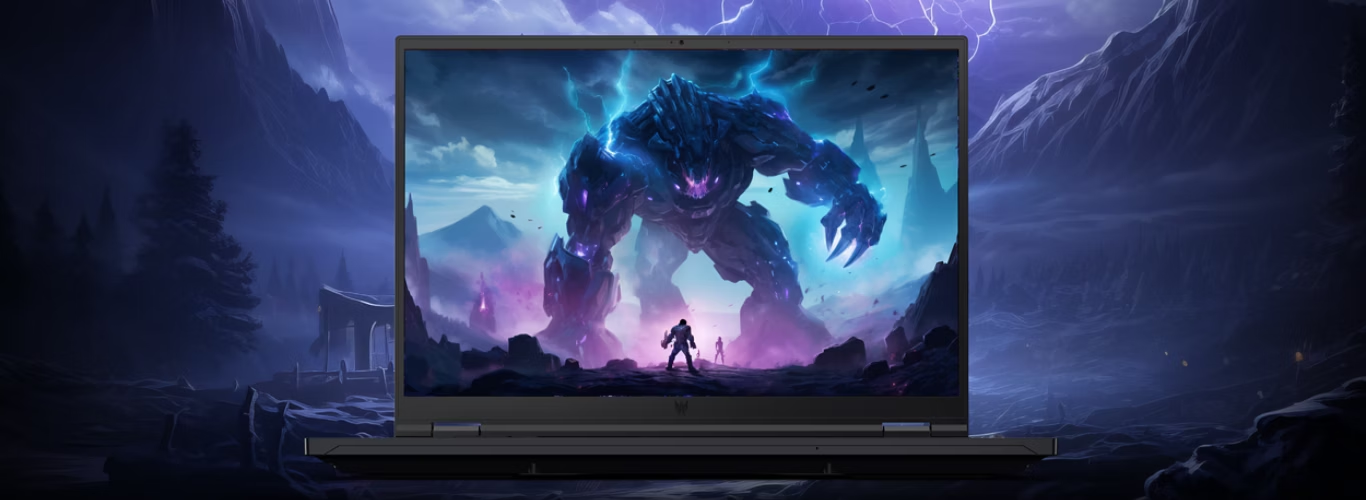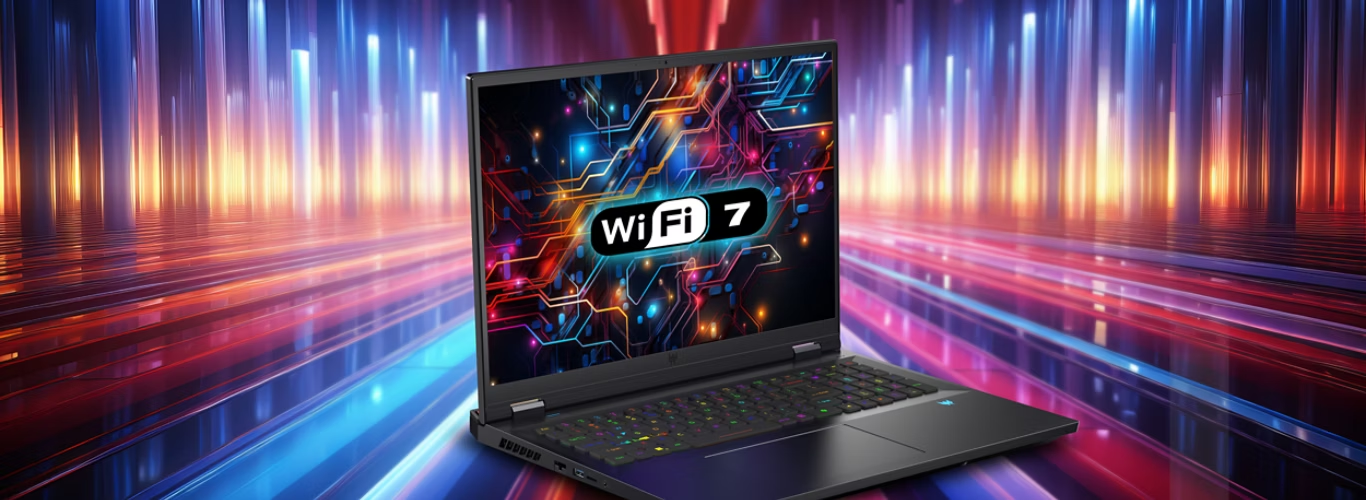Welcome to our in-depth Acer Predator Helios 18 Review, where we explore the specifications, features, performance, and and overall experience of this gaming powerhouse.
Acer predator helios 18 Specs
| Laptop Class | Gaming, Desktop Replacement |
| Processor | Intel Core i9-14900HX |
| RAM (as Tested) | 32 GB |
| Boot Drive Type | SSD |
| Boot Drive Capacity (as Tested) | 2 TB |
| Screen Size | 18 inches |
| Native Display Resolution | 2560 by 1600 |
| Touch Screen | Not Available |
| Panel Technology | Mini LED |
| Variable Refresh Support | G-Sync |
| Screen Refresh Rate | 250 Hz |
| Graphics Processor | Nvidia GeForce RTX 4090 Laptop GPU |
| Graphics Memory | 16 GB |
| Wireless Networking | Wi-Fi 7, Bluetooth |
| Dimensions (HWD) | 1.14 by 15.9 by 12.4 inches |
| Weight | 7.1 lbs |
| Operating System | Windows 11 |
| Tested Battery Life (Hours:Minutes) | 5:01 |

Pros and Cons of Acer predator helios 18
Pros
- Packs a punch with performance perfect for enthusiasts.
- Affordable price tag while matching up well with RAM and storage options from others.
- Bright and super quick mini LED QHD+ screen makes visuals pop!
Cons
- Doesn’t bring anything extra special or top-notch performance-wise.
- Battery life is just okay, nothing to write home about.
- Webcam quality isn’t the best, so video calls might not look as sharp.

Acer’s Predator Helios 18 laptop is a top-tier gaming machine, starting at $2,499.99 and reaching $3,099.99 for the model we tested. When we look into Acer predator helios 18 review gaming side, it’s built for serious gamers who want desktop-level power on the go. With a large 18-inch QHD+ 250Hz display and powerful hardware including a 14th Gen Intel Core i9 CPU and Nvidia RTX 4090 GPU, you’ll experience smooth gaming at high settings.
While the laptop offers some flashy RGB design elements, its overall build is rather ordinary. Battery life is average, and the webcam quality could be better. However, if you’re focused on performance and this fits your budget, it’s a solid choice.
If you’re willing to spend more, the MSI Titan 18 HX is excellent for both gaming and content creation. Meanwhile, the Alienware m18 R2 stands out for its sturdy build quality.

Design: Emulating Desktop Power in a Portable Package
Like all 18-inch gaming laptops, it’s undeniably large and heavy. Measuring 1.14 by 15.9 by 12.4 inches (HWD) and weighing 7.1 pounds, it’s not the most portable option out there.
While the plastic construction of the Helios 18 doesn’t feel as high-end for its price, it’s not alone in this among its competitors like the Titan and Strix, which also use plastic. In comparison, the Alienware m18 R2 and the Blade 18 offer a more luxurious feel with their metal and aluminum builds, respectively. Despite this, the Helios 18’s design might not catch your eye as much, especially considering its price.
It’s important to remember that the size and weight of these laptops aren’t necessarily drawbacks, as they’re designed to replace desktop computers. They’re meant to be powerful and portable for short trips or when you need to move them. Compared to similar models like the Alienware m18 R2 and the MSI Titan 18 HX, the Helios 18 isn’t the heaviest option. The Asus ROG Strix Scar 18 and Razer Blade 18 are a bit easier to carry around, but they might not offer as much power. Each design choice, whether focusing on power or portability, has its trade-offs.
Acer’s design is straightforward, but it has some cool features. The laptop’s exterior and keyboard area are simple black plastic, but there are neat LED accents on the lid and back. I particularly like the Predator logo with its six glowing lines. The LED bar on the back adds a fun touch, allowing for customizable lighting effects. However, you won’t see it when the laptop is open because the display covers it up.

While the plastic body of the Helios 18 doesn’t feel super high-end for its price, it’s not the only one in its class with this material—the Titan and Strix models also use plastic. In comparison, the Alienware m18 R2 feels more luxurious with its metal lid, and the Blade 18 is even more impressive with its full aluminum build. Overall, the design of the Helios 18 might not catch your eye as much, especially considering its price.
When it comes to the rest of the laptop’s build, the touchpad is large and responsive, making navigation easy. The keyboard is also comfortable to use. While it doesn’t have the mechanical keyboard option like some of its competitors, the keys feel satisfying with a nice bounce and no mushiness. One cool feature is the “MagKey 3.0” on the WASD keys, allowing you to swap between MagClick or MagSpeed keycaps. MagClick offers mechanical feedback with tactile punch, while MagSpeed keycaps come with vibrant LED lighting for a bit of flair.

Using the Acer Predator Helios 18: Display, Connectivity, and Extras
Now, let’s talk about the display, which is one of the key features of an 18-inch laptop. Like similar models, it offers a monitor-like experience that closely resembles desktop gaming while still being somewhat portable. This particular display is a mini LED panel with a resolution of 2,560 by 1,600 pixels, a refresh rate of 250Hz, and support for G-Sync, ensuring smooth and immersive gaming experiences.
The mini LED technology used in this laptop’s display allows for exceptional brightness, resulting in vivid colors that truly pop. With a resolution of 2,560 by 1,600 pixels and a refresh rate of 250Hz, the display strikes a good balance for a powerful laptop like this. Acer mentioned that the 250Hz refresh rate doesn’t offer any performance advantage over the standard 240Hz; it’s just a feature of this specific panel.
In terms of connectivity, there’s a good variety of ports available. On the left side, you’ll find an Ethernet jack (with Killer Ethernet support), a USB Type-A port, a micro SD card slot, and a headphone jack. On the right side, there are two more USB-A ports. At the rear, you’ll find two USB Type-C ports with Thunderbolt 4 support, an HDMI connection, and a power jack.
With a wide range of physical connections, this laptop suits almost any task, not just gaming. It features Killer Wi-Fi 7 and a 1080p webcam, though the webcam’s video quality isn’t the best—it’s a bit fuzzy.
Under the hood, the Helios 18 has some impressive hidden features. Acer has implemented an advanced thermal design to keep the powerful components running smoothly. This includes fifth-generation Aeroblade metal fans and improved vector heat pipes for better heat dissipation. Liquid metal thermal solution on the CPU also helps improve cooling.
To manage performance and customize lighting, you can use the included Predator Sense app. It allows you to adjust system settings, manage preferences, monitor component speeds and temperatures, and choose from different performance scenarios like quiet, balanced, performance, and turbo modes. In our testing, we found that turbo mode offers noticeable improvements over performance mode, though it does come with louder fan noise. If you don’t need maximum power, sticking with performance mode should suffice for most tasks.

Testing the Acer Predator Helios 18: Intel 14th Gen Delivers
The Helios 18 we’re looking at here comes with Intel’s latest 14th Gen processors. There’s also a more affordable version available with previous 13th Gen CPUs. Starting at $2,499.99, the least expensive model of the 14th Gen variant includes an Intel Core i9-14900HX processor, 32GB of memory, a 1TB SSD, and an Nvidia GeForce RTX 4080 GPU.
Our review unit, model PH18-72-90C9, offers even more for $3,099.99. It features the same Core i9 HX processor and 32GB of RAM at 5,600MHz. However, it upgrades to a 2TB SSD and an RTX 4090 GPU (175W). While the CPU and GPU choices heavily influence the price of any gaming system, don’t overlook the advanced display and other engineering features that contribute to the higher cost. There are even pricier options available, such as configurations with up to 4TB of SSD storage.
The “HX” suffix from Intel indicates the ultra-high-performance tier. For Core i9 processors in this generation, that means a 24-core, 32-thread chip capable of handling any workload with ease. To accurately assess the performance of these components, we ran the Helios 18 through our standard benchmark tests. The results are then compared against other systems to provide a comprehensive evaluation.
All of these systems are powerful 18-inch competitors with similar price tags. The Alienware m18 R2, priced at $3,599.99, stands out for its sleek design, although its thinness may limit its performance somewhat. The Asus ROG Strix Scar 18, costing $3,699, shares a similar size and build with the Helios 18, but it runs on a last-generation CPU. The MSI Titan 18 HX, priced at $5,399, sets a new standard for performance. Lastly, the Razer Blade 18, available for $3,799.99 in the 13th Gen model we tested, is the most portable option with its all-metal build.

Productivity and Content Creation Tests
We evaluate both mobile and desktop systems using the same general productivity benchmarks. One of our main tests is UL’s PCMark 10, which simulates various real-world office tasks to measure overall system performance, including a storage subtest for the primary drive.
Additionally, we use three CPU-focused benchmarks that utilize all available cores and threads. Maxon’s Cinebench R23 renders a complex scene using the Cinema 4D engine. Geekbench 5.4 Pro from Primate Labs simulates a range of popular applications, including PDF rendering and machine learning tasks. Lastly, we employ HandBrake 1.4, an open-source video transcoder, to convert a 12-minute 4K video clip to 1080p resolution (shorter times indicate better performance).
To complete our evaluations, we utilize PugetBench for Photoshop from workstation maker Puget Systems. This benchmark tool assesses a PC’s performance for content creation and multimedia tasks using Adobe’s Creative Cloud version 22 of Photoshop. PugetBench for Photoshop automates various Photoshop tasks, including opening, rotating, resizing, and saving images, as well as applying masks, gradient fills, and filters
In our tests, these laptops showed similar performance levels across the board, except for the Blade, which lagged due to its slim design. While the Helios 18 wasn’t the absolute fastest, it kept up with these other high-speed machines in every productivity and media task. It’s expected that a modern Core i9 CPU can handle daily productivity and multitasking effortlessly. However, these latest chips excel as media editing and creation powerhouses. They’re more than capable for gaming, but their robust performance suggests they’re geared towards handling demanding processing tasks beyond gaming, especially the Titan and other high-end models.

Graphics and Gaming Tests
For gaming laptops and other mobile gaming devices, we conduct a variety of synthetic and real-world gaming benchmarks. Synthetic tests include two DirectX 12 simulations from UL’s 3DMark: Night Raid, which is suitable for systems with integrated graphics, and Time Spy, which is more demanding and suitable for gaming rigs with discrete GPUs. Additionally, we use GFXBench 5, a cross-platform GPU benchmark that measures OpenGL performance. These tests are rendered offscreen to accommodate different native display resolutions, with higher frames per second (fps) indicating better performance.
In our real-world gaming tests, we use the in-game benchmarks of F1 2021, Assassin’s Creed Valhalla, and Rainbow Six Siege, all benchmarked at 1080p resolution. These games represent simulation, open-world action-adventure, and competitive/esports shooter genres, respectively. Valhalla and Siege are tested twice, with Valhalla at Medium and Ultra quality settings, and Siege at Low and Ultra quality settings. F1 2021 is tested twice at Ultra quality settings, once with AMD and Nvidia’s performance-boosting FSR and DLSS features turned on, and once without.

Graphics and Gaming Tests
For gaming laptops and other mobile gaming devices, we conduct a variety of synthetic and real-world gaming benchmarks. Synthetic tests include two DirectX 12 simulations from UL’s 3DMark: Night Raid, which is suitable for systems with integrated graphics, and Time Spy, which is more demanding and suitable for gaming rigs with discrete GPUs. Additionally, we use GFXBench 5, a cross-platform GPU benchmark that measures OpenGL performance. These tests are rendered offscreen to accommodate different native display resolutions, with higher frames per second (fps) indicating better performance.
In our real-world gaming tests, we use the in-game benchmarks of F1 2021, Assassin’s Creed Valhalla, and Rainbow Six Siege, all benchmarked at 1080p resolution. These games represent simulation, open-world action-adventure, and competitive/esports shooter genres, respectively. Valhalla and Siege are tested twice, with Valhalla at Medium and Ultra quality settings, and Siege at Low and Ultra quality settings. F1 2021 is tested twice at Ultra quality settings, once with AMD and Nvidia’s performance-boosting FSR and DLSS features turned on, and once without.
In gaming tests, the Helios 18 consistently performed well, even if it wasn’t always the top scorer. While the Titan 18 stood out with impressive results, the Blade 18 fell behind once again. Overall, all systems showcased their ability to handle modern titles at maximum settings, especially at 1080p resolution. Whether you’re into high-refresh competitive games or immersive open-world experiences, the Helios 18 has you covered.

Although the laptop’s native resolution is QHD+, running games at this higher pixel count can be more demanding. However, the Helios 18 still handled it comfortably. In tests at QHD+ resolution, frame rates naturally dropped compared to 1080p, but remained within playable ranges. Even with reduced results, you can enjoy games well beyond 60fps and make the most of the high-refresh panel at native resolution.

Battery and Display Tests
To assess battery life, we play a locally stored 720p video file on each laptop or tablet. We set the display brightness at 50% and the audio volume at 100%. Before the test, we ensure the battery is fully charged and turn off Wi-Fi and keyboard backlighting.
For evaluating display performance, we use a Datacolor SpyderX Elite monitor calibration sensor along with its Windows software. This helps us measure various aspects of the laptop screen, including color saturation—indicating the percentage of the sRGB, Adobe RGB, and DCI-P3 color gamuts the display can accurately show. We also measure the screen’s brightness levels at 50% and at its peak brightness in nits (candelas per square meter).
Acer’s battery performance was okay, although it wasn’t outstanding like the Titan 18. Typically, you wouldn’t stray too far from a charger with a laptop like this, but it can last a few hours if needed. Regarding the screen, the mini LED brightness proved its value (similar to the leading Titan’s screen), and the color coverage was satisfactory.

Verdict: Top-End Power for a Bit Less
Acer’s Predator Helios 18 doesn’t stand out significantly from its competitors, for better or worse. In this category of high-performance laptops, which come with hefty components and price tags, the Helios 18 meets the expected standards of power and features. It’s a well-made, blazing fast laptop with an impressive display and some extra perks, much like its larger counterparts. While it doesn’t have any major flaws, it also lacks a standout feature in design or performance, though it’s the most affordable option among similar models.

Considering that all these systems come with a hefty price tag, the actual cost of entry is less crucial. However, it’s still worth noting the relative value. If your budget is just over $3,000, the Helios 18 offers entry into the high-end tier along with other top performers. This configuration doesn’t compromise on memory, storage, or display quality to achieve savings; it may just provide slightly less performance at times, and its design isn’t particularly remarkable. Ultimately, if you’re looking for a laptop that ticks all the premium-feature boxes and delivers enthusiast-level performance on a large display, the Helios 18 is a solid choice.


